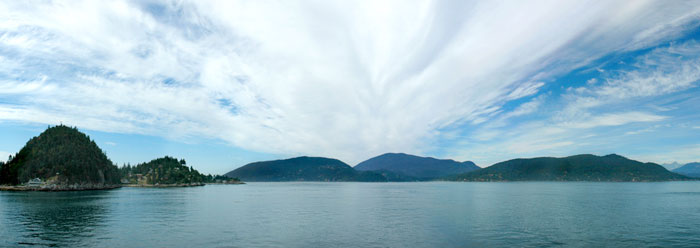The theory of plate tectonics explains many earth features, like ocean floor trenches and sediment-free mid-ocean ridges made of hardened magma. The popular theory holds that continents drift slowly across earth's surface atop deeply buried molten rock, and that plate movements creep along at leisurely paces. But new research by Yale University geologists calls that into question.
Yale graduate student Ross Mitchell and his team traced the orientations of tiny magnetic minerals in Cambrian rocks from Australia. In research published in the journal Geology, they applied evolution's timeline to the deposits that were studied and concluded that instead of crawling at today's slow rate, ancient continents must have moved over three times faster.
Reconstructions of the ancient earth are constantly being amended because they are based on vague clues. However, the current consensus is that a giant, single supercontinent called Pangaea was once centered on the South Pole. Its southern portion, Gondwana, contained what would eventually break off to become Australia. For an unknown reason, Pangaea split up and scientists are interested in modeling where the resulting land masses used to be and how fast they moved to their current positions.
If the Cambrian rocks travelled across the globe as far as the various clues indicate they did, then they had to have moved at quite a clip, even within the standard evolutionary timeframe.1
The study's authors provided the explanations that "either nonuniformitarian plate tectonics or an episode of rapid true polar wander" could have moved these massive plates so quickly.2 "Nonuniformitarian plate tectonics" refers to continental plate movements that occurred faster than the currently observed rate of 4 to 5 centimeters per year.3 "True polar wander" refers to the possibility that the mantle, and the plates that ride atop it, shifted so that the North Pole was relocated.
But there is a third option that these researchers failed to consider. Creation geophysicist John Baumgardner, who is recognized throughout the world as the leader in computational modeling of the earth's mantle dynamics, recently researched this very question.
He realized that neither nonuniformitarian plate tectonics nor true polar wander could possibly explain the rapidity with which continents moved…during only weeks of the Genesis Flood year! In other words, for these Cambrian rocks--which mark the start of the Flood--to have travelled that far across the globe so fast, they had to have moved faster than the physics of true polar wander or the most rapid possible rates of plate motion would allow.4
Therefore, Baumgardner, who developed the important TERRA software for modeling earth dynamics while at Los Alamos National Laboratories, began work on a unique alternative: Perhaps the whole earth experienced rotational instability that dramatically rearranged the continents on its surface. He wrote in a recent email, "When I programmed and solved the equations describing the rotational behavior of a solid body and applied them to this scenario for the earth, indeed I found spectacular unstable rotational motions of the earth were possible."
He presented his findings at the 2008 International Conference on Creationism with a talk titled "The Roles of Tectonics and Rotational Dynamics in the Genesis Flood." During the presentation, he said that what makes these superfast plate motions possible is that when mantle material is stressed and heated, it weakens by a factor of over a billion times.
His computational results, as well as solutions of the classic rotational motion equations provided by 18th-century creation scientist Leonard Euler, showed plenty of potential for radical rearrangement of earth's continents.
Baumgardner said, "During this unstable rotational motion, I found that the North and South Poles themselves rotate about an axis through the plane of the equator and do so quickly enough to be able to cause several complete flips of the earth relative to the spin axis during the few months of the Flood." This rotational instability also accounts for magnetic field reversal data like those which Mitchell studied.
Although this is a valid model, rapid rotational dynamics of the earth is not on the radar of geologists who reject the possibility of a recent, global flood. But it shows that the biblical record can inspire high quality reconstructions of earth's past that accord with geological observations. According to both Genesis and Mitchell's study, earth experienced a catastrophic, violent past. And Baumgardner's creation-based research gives a logical mechanism for it.
References
- Gondwana Supercontinent Underwent Massive Shift During Cambrian Explosion. Yale University press release, August 10, 2010.
- Mitchell, R. N., D. A. D. Evans and T. M. Kilian. 2010. Rapid Early Cambrian rotation of Gondwana. Geology. 38 (8): 755-758.
- For another example of nonuniformitarian plate tectonics, see Thomas, B. Rapid Rifting in Ethiopia Challenges Evolutionary Model. ICR News. Posted on icr.org November 18, 2009, accessed August 16, 2010.
- Under realistic conditions, runaway plate tectonic motion could have occurred at two meters per second for a short time, but even this is insufficient to account for apparent continental motion relative to the geographic poles in the Flood timeline.
* Mr. Thomas is Science Writer at the Institute for Creation Research.
Article posted on August 23, 2010.


















